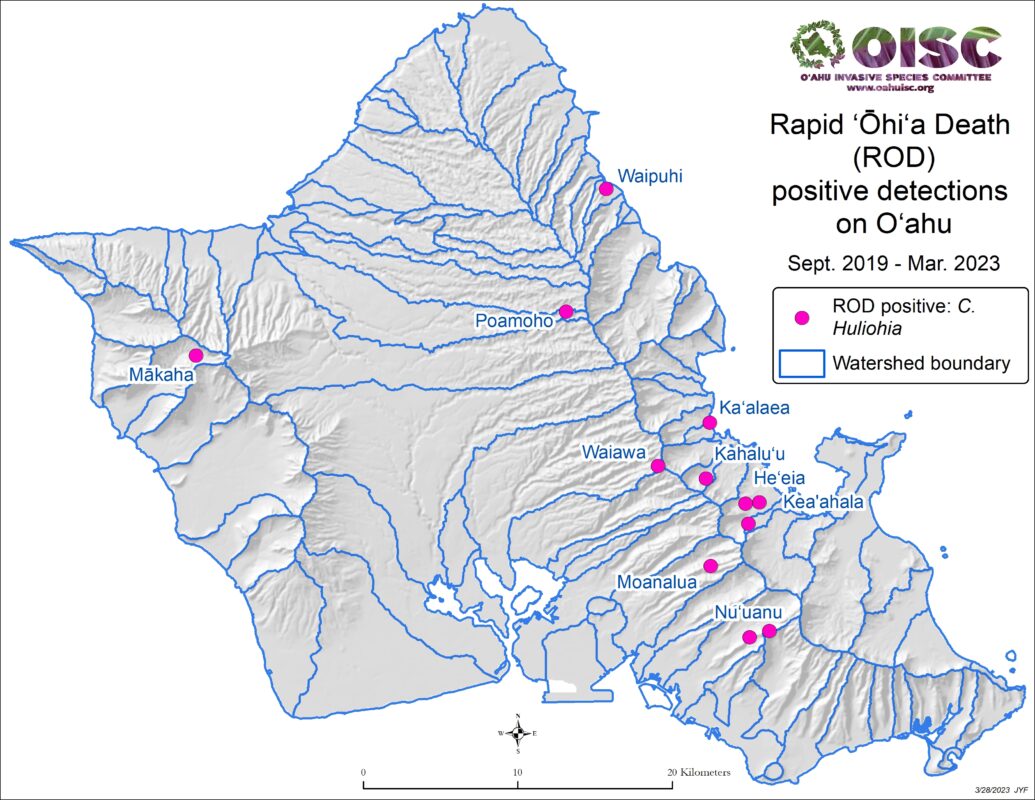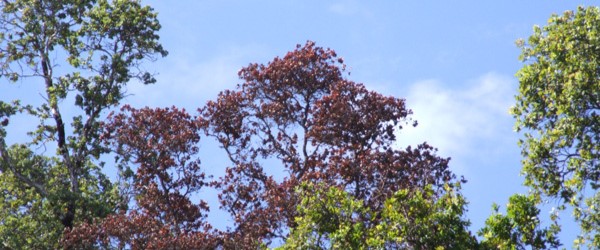Keep up-to-date about ROD on Oahu and learn what you can do to stop ROD from spreading.
#ROD
FOURTH DETECTION OF RAPID ʻŌHIʻA DEATH ON O‘AHU
Less Aggressive Fungus Found in State Forest Reserve
Rapid ʻŌhiʻa Death Detected on Oʻahu
ROD has now been detected on Hawai‘ Island, Maui, Kaua‘i and O‘ahu. However, to date, the more aggressive form of the disease has NOT been found on Maui or O‘ahu, and is limited on Kaua‘i.
Aggresive ROD Fungus Confirmed on Kaua‘i
JOINT NEWS RELEASE FOR IMMEDIATE RELEASE December 21, 2018 DEPARTMENT OF LAND AND NATURAL RESOURCES DAVID Y. IGE: GOVERNOR SUZANNE…
Read More
Sick ohia trees? How to report suspected Ohia Wilt/Rapid Ohia Death
Rapid Ohia Death (ROD) was first detected in the Puna District on Big Island in 2010. It begins with wilting…
Read More





